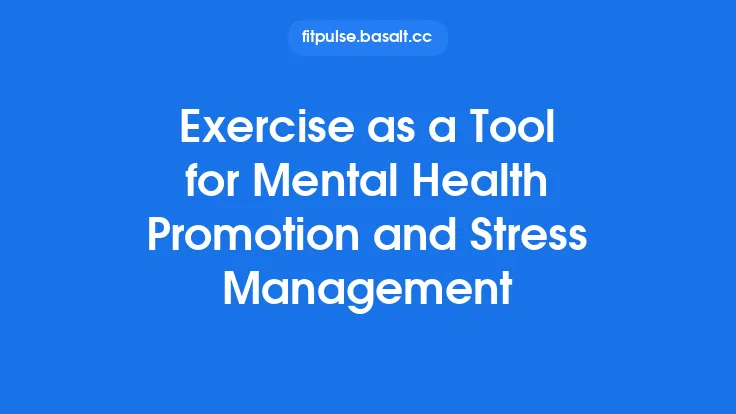Maintaining a consistent fitness routine can feel like an impossible puzzle for professionals whose days are already packed with meetings, deadlines, and travel. Yet, the benefits of regular physical activity—enhanced mental clarity, stable energy levels, and reduced risk of chronic disease—are too valuable to ignore. The key lies in designing a training plan that aligns with both the limited time available and the specific health objectives each individual seeks to achieve. Below is a comprehensive guide to crafting custom training programs that fit seamlessly into a busy lifestyle while targeting measurable, long‑term fitness outcomes.
Understanding the Constraints of Busy Professionals
Time scarcity is the most obvious barrier, but it’s often accompanied by irregular schedules, frequent travel, and high mental load. Recognizing these realities helps shape realistic expectations:
| Common Constraint | Practical Implication |
|---|---|
| Fragmented days | Need for flexible, modular workouts that can be split into short bouts |
| Variable energy levels | Programming sessions that can be scaled up or down based on daily readiness |
| Limited access to equipment | Emphasis on bodyweight, resistance bands, and portable tools |
| Travel frequency | Portable routines that can be performed in hotel rooms or small spaces |
By mapping out the typical rhythm of a workweek—identifying windows of 5‑15 minutes, potential “active breaks,” and days with more flexibility—trainers can pinpoint the optimal moments for exercise without adding stress.
Defining Specific Fitness Objectives for Time‑Constrained Individuals
Even with limited time, a training plan should be purpose‑driven. Rather than vague goals like “get fit,” busy professionals benefit from clear, quantifiable objectives that align with their lifestyle and health priorities:
- Improve cardiovascular health markers (e.g., resting heart rate, blood pressure)
- Boost daily energy and reduce fatigue
- Enhance mental focus and stress resilience
- Support musculoskeletal health to counteract prolonged sitting
- Maintain functional movement quality for everyday tasks
These objectives steer program design toward the most efficient modalities, ensuring every minute of training contributes directly to the desired outcome.
Core Principles of Time‑Efficient Program Design
- Compound Emphasis – Choose exercises that recruit multiple muscle groups simultaneously, delivering a greater systemic stimulus per unit of time.
- Intensity Over Duration – Short, high‑intensity efforts (e.g., 30‑second bursts) can elicit robust physiological adaptations without long cardio sessions.
- Progressive Overload in Micro‑doses – Incrementally increase load, volume, or complexity in small, manageable steps to sustain adaptation.
- Periodized Flexibility – Build a macro‑cycle that accommodates fluctuating work demands, allowing for “deload” weeks or reduced‑volume days.
- Recovery Integration – Schedule active recovery and mobility work that doubles as desk‑friendly movement, preserving joint health without dedicated gym time.
Structuring Micro‑Workouts: The 10‑Minute Block
A 10‑minute session can be surprisingly potent when organized as a circuit of three to four compound movements. The format typically follows:
- Warm‑up (1 minute) – Dynamic stretches or light cardio (e.g., marching in place, arm circles).
- Main Circuit (8 minutes) – Perform each exercise for 40 seconds, rest 20 seconds, repeat the circuit twice.
- Cool‑down (1 minute) – Gentle breathing and stretch of the primary muscle groups used.
Example Circuit (Equipment‑Free):
- Squat‑to‑Press with Resistance Band
- Push‑up to Row (Band or TRX)
- Reverse Lunge with Core Twist
- Plank‑to‑Side‑Plank
This structure maximizes metabolic demand, improves neuromuscular coordination, and can be slotted into a lunch break, before a meeting, or after a flight.
Leveraging Compound Movements for Maximal Return
Compound exercises are the workhorses of a time‑constrained program because they:
- Stimulate multiple physiological systems (cardiovascular, muscular, nervous) simultaneously.
- Reduce total exercise volume needed to achieve systemic benefits.
- Translate directly to daily activities, reinforcing posture and movement patterns.
Key Compound Options:
- Dead‑lift variations (dumbbell, kettlebell, or band) for posterior chain activation.
- Standing overhead press to engage shoulders, core, and upper back.
- Pull‑up or row variations for pulling strength and scapular stability.
- Squat variations (goblet, split, or jump squats) for lower‑body power and endurance.
When equipment is unavailable, bodyweight progressions (e.g., elevated push‑ups, single‑leg squats) can maintain the compound stimulus.
Integrating High‑Intensity Interval Training (HIIT) Without Overemphasizing Endurance
HIIT is often associated with endurance, but its metabolic and hormonal benefits make it ideal for busy professionals seeking health improvements beyond stamina:
- Short bursts (15‑30 seconds) of maximal effort followed by equal or slightly longer rest produce a high afterburn effect (excess post‑exercise oxygen consumption, EPOC).
- Minimal equipment: Sprint intervals can be performed on a stairwell, in a hallway, or using a stationary bike for 5‑10 minutes.
- Adaptable intensity: Adjust work‑to‑rest ratios (e.g., 1:2 for lower stress days, 1:1 for higher capacity days).
A practical HIIT micro‑session could be:
- 30 seconds of stair sprints
- 30 seconds of rest or slow walk
- Repeat for 5 rounds (total 5 minutes)
This approach improves cardiovascular health markers and metabolic flexibility without demanding long cardio sessions.
Scheduling Strategies: Periodization Within a Compressed Calendar
Even a limited schedule benefits from structured periodization—the systematic variation of training variables over time. A simplified model for busy professionals includes:
| Phase | Duration | Focus | Typical Session Length |
|---|---|---|---|
| Foundation | 2–3 weeks | Establish movement quality, baseline volume | 10–15 min |
| Build | 4–6 weeks | Increase intensity, introduce progressive overload | 12–20 min |
| Peak/Performance | 2 weeks | Maximize stimulus, fine‑tune objectives | 15–25 min |
| Recovery/Deload | 1 week | Reduce load, emphasize active recovery | 5–10 min |
By aligning the phases with known work cycles (e.g., project launches, fiscal quarters), the program remains flexible yet purposeful. If a week becomes unusually demanding, the athlete can shift to the recovery phase without losing overall progression.
Monitoring Progress and Adjusting Load in a Busy Lifestyle
Objective tracking is essential for motivation and for ensuring the program remains aligned with the set fitness objectives. Key metrics that require minimal time to record include:
- Resting heart rate (RHR) – Measured each morning; a downward trend indicates improved cardiovascular health.
- Perceived Energy Scale – Rate daily energy on a 1‑10 scale; look for upward shifts over weeks.
- Work‑load Log – Simple spreadsheet noting exercise type, sets, reps, and resistance used.
- Recovery Quality – Brief questionnaire (sleep quality, muscle soreness) to gauge readiness.
Adjustments are made based on these data points: if RHR plateaus, increase intensity slightly; if energy scores dip, incorporate an extra recovery micro‑session.
Technology and Tools to Streamline Customization
Modern tools can automate many aspects of program design and tracking:
- Mobile Apps (e.g., Strong, Fitbod) that generate time‑based circuits based on available equipment and user‑entered goals.
- Wearables (e.g., HR monitors, smart rings) that provide real‑time feedback on intensity zones, ensuring HIIT intervals stay within target ranges.
- Digital Calendars integrated with reminders for “movement blocks,” turning exercise into a scheduled appointment.
- Online Coaching Platforms that allow quick adjustments to program variables based on weekly check‑ins.
These technologies reduce the cognitive load of planning, leaving more mental bandwidth for professional responsibilities.
Nutrition and Recovery Considerations for Limited Time
Even the best‑designed workout will falter without adequate fueling and recovery:
- Meal Timing: Prioritize a balanced protein‑carbohydrate snack within 30‑60 minutes post‑workout to support muscle repair and glycogen replenishment.
- Hydration: Keep a water bottle at the desk; aim for 2–3 L daily, adjusting for activity level.
- Micro‑Recovery: Incorporate brief “desk stretches” (e.g., thoracic rotations, hip flexor releases) every 90 minutes to counteract prolonged sitting.
- Sleep Hygiene: Consistent bedtime routines improve hormonal balance, enhancing the benefits of short, intense sessions.
These practices complement the training plan, ensuring that limited workout time translates into maximal physiological gain.
Maintaining Motivation and Consistency Amid Competing Demands
Sustaining a habit when work pressures surge requires psychological strategies:
- Identity Alignment – Frame exercise as part of a professional identity (“I’m the kind of leader who invests in health to make better decisions”).
- Micro‑Goal Setting – Celebrate small wins (e.g., completing three 10‑minute sessions in a week) rather than only long‑term outcomes.
- Social Accountability – Pair with a colleague for virtual “movement challenges” or join a corporate wellness group.
- Environmental Cues – Keep workout gear visible on the office chair or in the office bag as a reminder.
When motivation wanes, these cues help re‑activate the habit loop without requiring extensive willpower.
Sample Weekly Blueprint (Adaptable to Individual Needs)
| Day | Session Type | Duration | Core Focus |
|---|---|---|---|
| Monday | Micro‑circuit (compound) | 12 min | Full‑body activation |
| Tuesday | HIIT stair sprints | 8 min | Cardiovascular health |
| Wednesday | Active recovery (desk mobility) | 5 min | Musculoskeletal balance |
| Thursday | Resistance band circuit | 15 min | Strength maintenance |
| Friday | Quick HIIT (bodyweight) | 10 min | Metabolic boost |
| Saturday | Optional longer session (if schedule permits) | 20‑30 min | Goal‑specific focus (e.g., energy, stress reduction) |
| Sunday | Rest or light walk | — | Recovery |
The blueprint is intentionally modular; any day can be swapped or omitted based on travel or workload, while still delivering consistent stimulus across the week.
Closing Thoughts
Designing a custom training plan for busy professionals is less about finding extra hours and more about maximizing the quality of the minutes you have. By anchoring the program to clear health objectives, leveraging compound and high‑intensity modalities, and embedding flexibility through periodization and technology, you can achieve measurable improvements in cardiovascular health, energy, and mental resilience—without sacrificing professional performance. The result is a sustainable, evergreen system that adapts to the ebb and flow of a demanding career while keeping your body and mind operating at their best.





